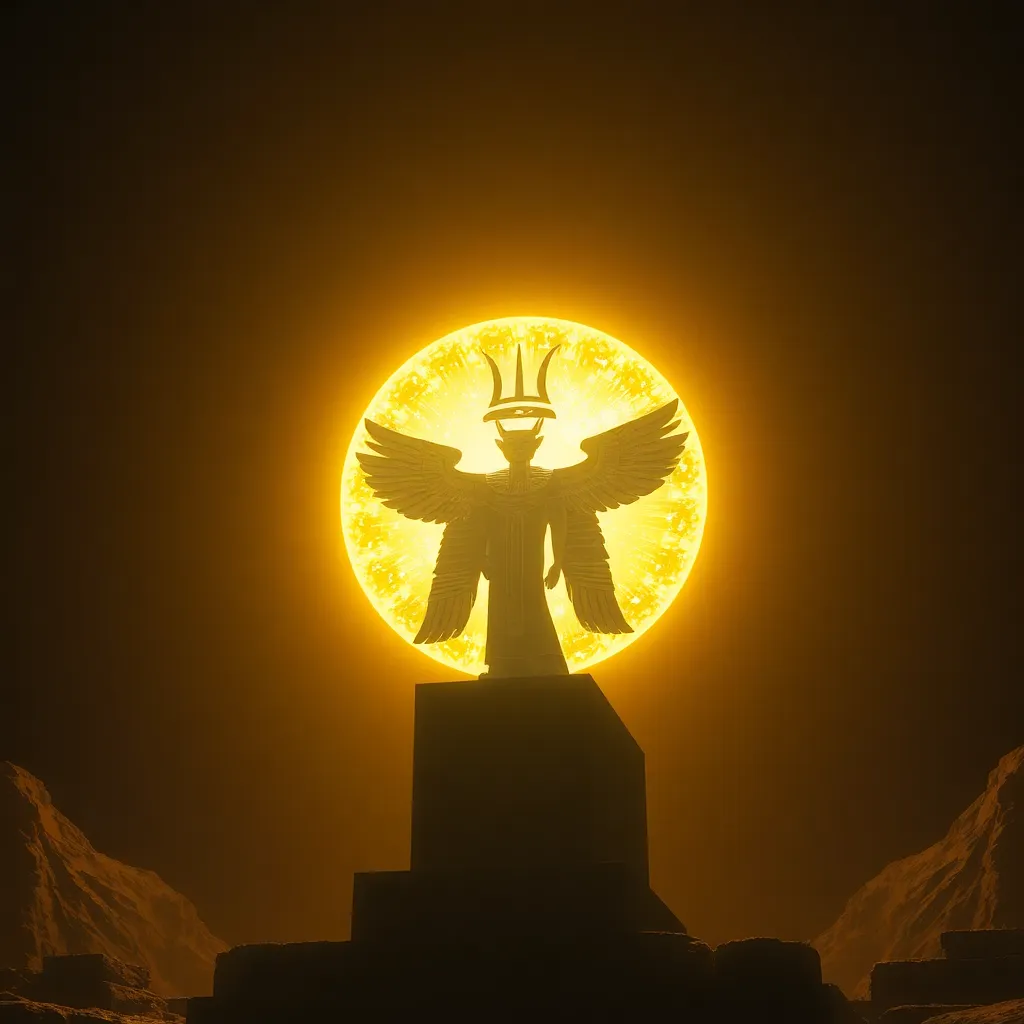The Aten and the Role of the Sun in Egyptian Mythology
I. Introduction
Ancient Egyptian mythology is a rich tapestry of gods, goddesses, and cosmic principles that governed the lives of the Egyptians. Among these deities, the sun held a particularly revered position, symbolizing life, power, and creation. The sun was not only a celestial body but also a representation of divine authority and order. One of the most significant representations of the sun in ancient Egyptian religion is the deity known as Aten.
II. The Aten: Definition and Significance
A. Meaning of “Aten” in the context of ancient Egypt
The term “Aten” translates to “the disk” or “the solar disk” in ancient Egyptian. It primarily refers to the physical form of the sun as a disk, which was believed to emit life-giving rays. This concept was central to the worship and reverence of the Aten as a deity.
B. The Aten as a solar deity
The Aten is recognized as a solar deity, embodying the sun’s life-giving properties. Unlike other sun gods, the Aten represents the sun’s physical presence rather than its personification, as seen in deities like Ra.
C. Distinction between Aten and other sun gods (e.g., Ra, Horus)
- Ra: The most widely worshiped sun god, representing the sun’s journey across the sky.
- Horus: Often associated with the sky and kingship, representing light and order.
- Aten: Focused on the solar disk and its rays, symbolizing direct nourishment and life.
III. Historical Context of the Aten
A. Origins of Aten worship in ancient Egypt
The worship of Aten can be traced back to the Middle Kingdom, but it gained prominence during the New Kingdom. Initially, Aten was considered a lesser deity, associated with the sun’s physical aspects.
B. Key periods of Aten’s significance, including the Amarna Period
The most significant period for the Aten was the Amarna Period (circa 1353-1336 BCE), during which Pharaoh Akhenaten radically transformed Egyptian religion by promoting the Aten as the sole god. This period marked a significant shift from the traditional polytheistic practices to a form of monotheism centered around the Aten.
C. Role of Pharaoh Akhenaten in promoting Aten
Pharaoh Akhenaten, originally named Amenhotep IV, changed his name to honor the Aten. He established the city of Akhetaten (modern-day Amarna) as a center for Aten worship, moving the capital from Thebes. Akhenaten’s reforms included closing temples dedicated to other gods and emphasizing personal devotion to the Aten.
IV. Iconography and Symbolism of the Aten
A. Depictions of the Aten in art and architecture
In art, the Aten is often depicted as a sun disk with rays extending downward, each ending in hands that offer ankh symbols (representing life) to the pharaoh and his family. This imagery illustrates the intimate relationship between the Aten and the royal family.
B. Symbolic meanings associated with the sun disk
The sun disk symbolizes:
- Life and nourishment
- Divine presence and protection
- Authority of the pharaoh as the intermediary between the Aten and the people
C. The Aten as a source of life and nourishment
The rays of the Aten are seen as bestowing vital energy and sustenance, reinforcing the belief that the sun was essential for the growth of crops and the health of the land.
V. Theological Implications of Aten Worship
A. Monotheism vs. polytheism in Aten worship
The promotion of the Aten by Akhenaten led to a theological debate about monotheism and polytheism. While Akhenaten sought to establish Aten as the sole god, traditional beliefs persisted, leading to conflict within the society.
B. The Aten as a representation of divine power and authority
The Aten’s worship not only elevated the status of the sun but also reinforced the divine right of the pharaoh, who was seen as the chosen representative of the Aten on Earth.
C. The impact of Aten on Egyptian religious practices
The emphasis on the Aten altered religious practices by promoting a more personal form of worship, moving away from elaborate rituals associated with multiple deities.
VI. The Cult of Aten and Temples
A. Construction of temples dedicated to the Aten
Several temples were constructed to honor the Aten, most notably the Great Temple of the Aten in Akhetaten. These temples were designed to be open-air spaces, allowing worshippers to connect directly with the sun.
B. Rituals and practices associated with Aten worship
Rituals included offerings of food and incense, prayers, and hymns to the Aten. These practices were meant to express gratitude and seek favor from the sun god.
C. The role of priests and priestesses in the Aten cult
Priests and priestesses played a crucial role in the worship of the Aten, conducting ceremonies and maintaining the temples. They were tasked with ensuring that the community remained in favor with the Aten.
VII. Decline of Aten Worship
A. Factors leading to the decline of Aten as a prominent deity
After Akhenaten’s death, the worship of the Aten began to decline due to several factors, including political changes and the reinstatement of traditional gods. The return to polytheism was swift and comprehensive.
B. Restoration of traditional polytheistic beliefs after Akhenaten
Subsequent pharaohs, including Tutankhamun, restored the worship of the traditional pantheon of gods. Temples dedicated to the Aten were dismantled or repurposed.
C. The legacy of Aten in later Egyptian religion
While Aten worship was largely erased, the concept of a singular divine source influenced later religious thoughts, including the eventual rise of monotheistic beliefs in other cultures.
VIII. Conclusion
The Aten holds a unique place in Egyptian mythology, representing a fascinating intersection of solar worship and monotheistic thought. Despite its decline after the Amarna Period, the legacy of the Aten continues to resonate in discussions of the evolution of religious thought. The interplay between mythology and culture in ancient Egypt is exemplified through the worship of the Aten, reflecting the deep connection the Egyptians had with the natural world and the divine.




